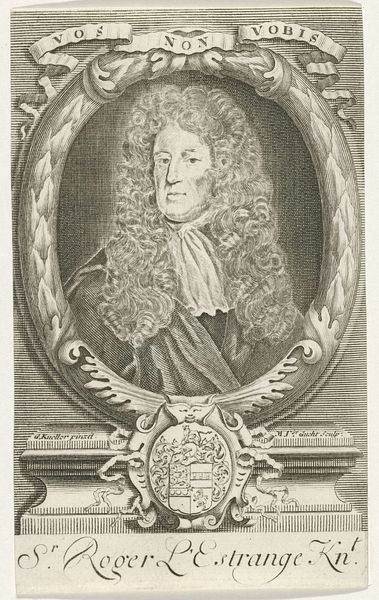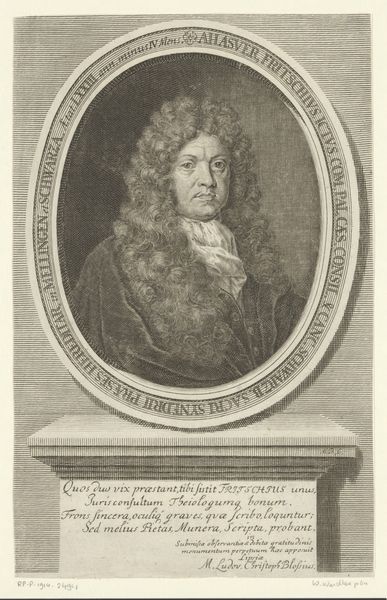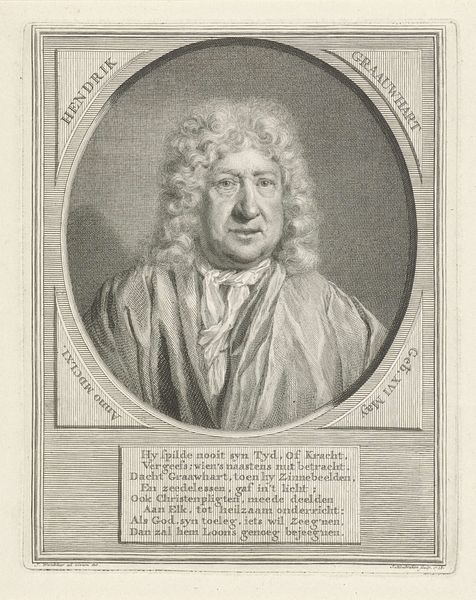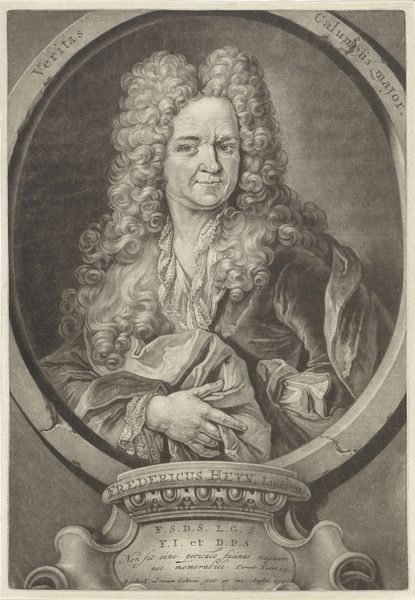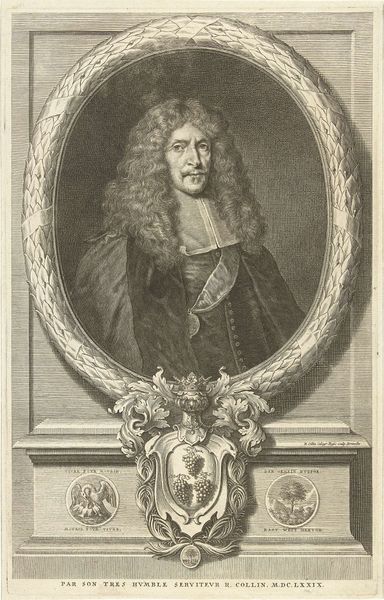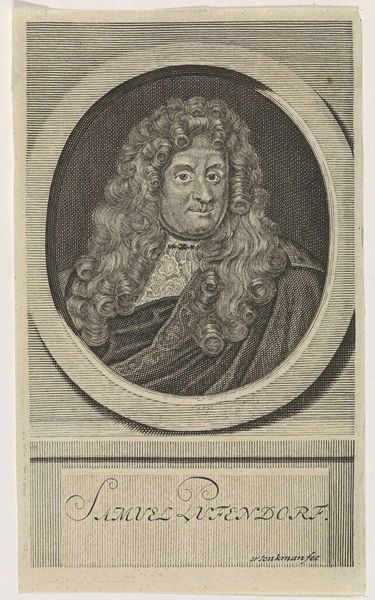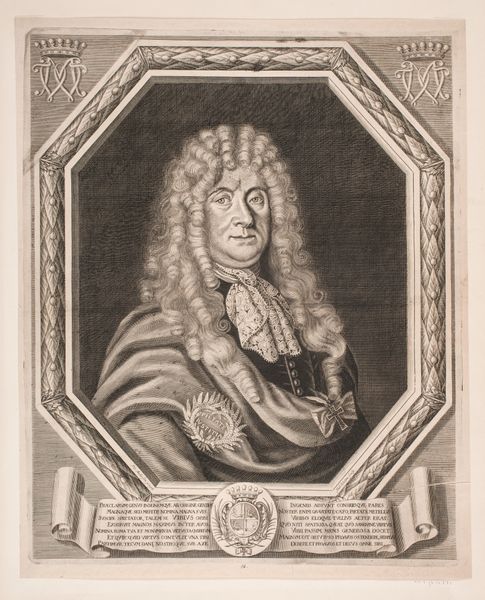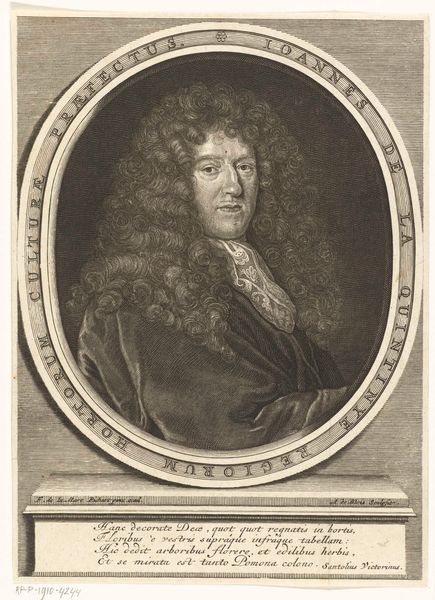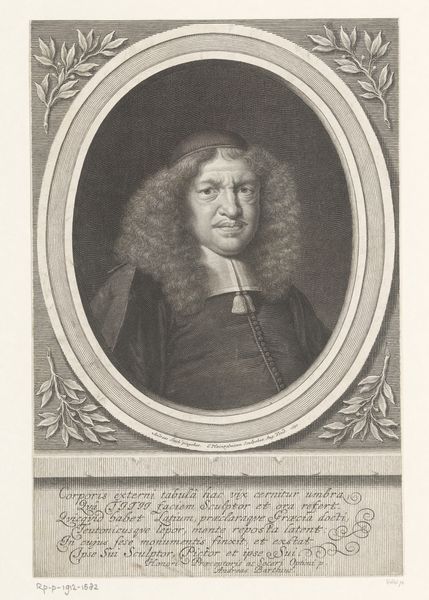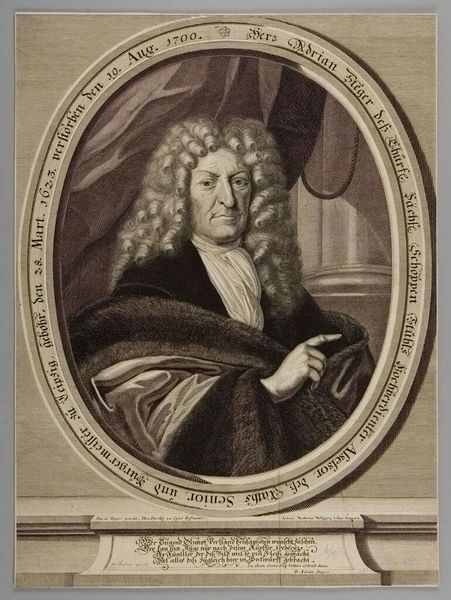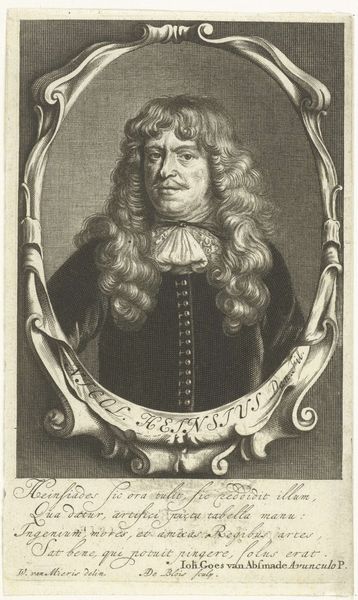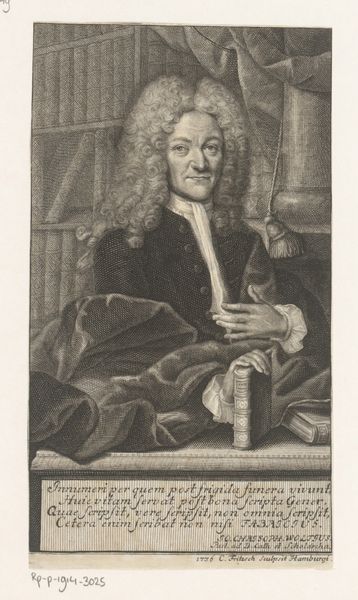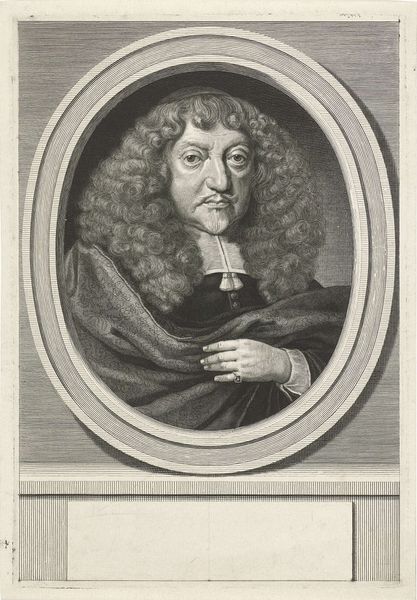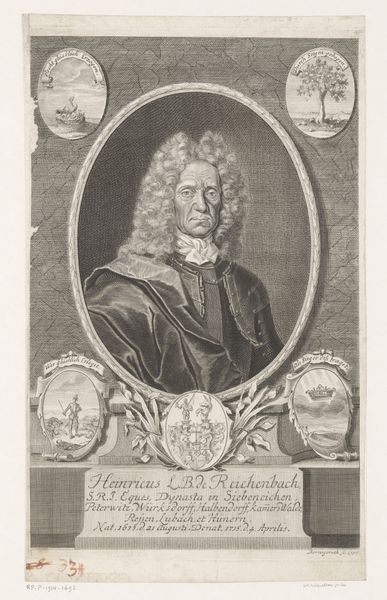
drawing, print, paper, ink, graphite, engraving
#
portrait
#
drawing
#
baroque
# print
#
charcoal drawing
#
paper
#
ink
#
pencil drawing
#
graphite
#
graphite
#
engraving
Dimensions: height 241 mm, width 179 mm
Copyright: Rijks Museum: Open Domain
Editor: So, this is Pieter Schenk's "Portret van een onbekende man," dating sometime between 1670 and 1713. It's currently held at the Rijksmuseum and made with ink, graphite, and engraving on paper. I'm struck by how the subject's clothing, the landscape in the background and the flamboyant wig all blend into one dark shape. What do you see in this piece, considered through the lens of materials and labor? Curator: For me, this portrait is all about the *process* of its making, the intricate labor involved in producing the engraving. Look closely, we can see how Schenk uses varied textures achieved through different applications of graphite, ink and engraving techniques to replicate the appearance of fabric, skin, and hair. Consider how these choices signal status through the material representation of the wig. This portrait showcases a reproduction of status and power as much as it shows an actual person. What are your thoughts on that? Editor: I see your point, the choice of material clearly reflects the value of displaying the subject's status through the print itself, destined for a particular consumption. It makes me think, did the cost of the materials used play a part in who was portrayed and who could access it? Curator: Absolutely. Think about who commissioned this and who consumed it. Prints like these, although perhaps cheaper than a painting, were still luxury goods. Consider the distribution networks in place – who profited, whose labor was valued, and how this artwork participated in systems of power? Editor: This has really changed my perspective. I was so focused on the man in the image, but it's much more about the entire process that made this image, and for whom, that gives this work meaning. Thanks! Curator: Exactly! By focusing on the materials and modes of production, we can appreciate how deeply ingrained art is within economic and social networks. There is so much to be learned through that type of analysis.
Comments
No comments
Be the first to comment and join the conversation on the ultimate creative platform.
